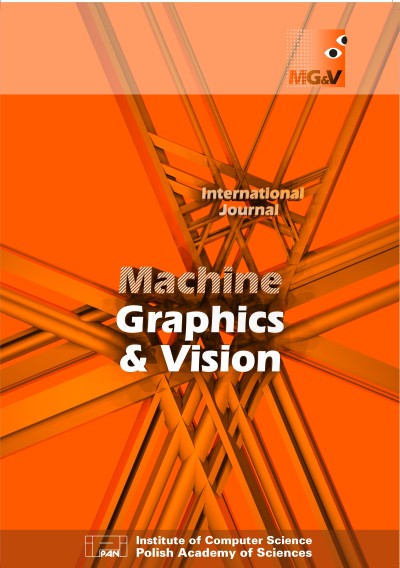Main Article Content
Article Details
P. J. Phillips, J. Huang H. Wechsler and, and P. Rauss. The FERET database and evaluation procedure for face recognition. Image and Vision Computing, 13:259–306, 1998. https://doi.org/10.1016/S0262-8856(97)00070-X. (Crossref)
P. Phillips, H. Mon, S. A. Rizvi, and P. J. Rauss. The FERET evaluation methodology for face recognition algorithms. IEEE Trans. Pattern Analysis and Machine Intelligence, 22:1090–1104, 2000. https://doi.org/10.1109/34.879790. (Crossref)
M. Nazir, M. Ishtiaq, A. Batool, M. A. Jaffar, and A. M. Mirza. Feature selection for efficient gender classification. In Recent Advances in Neural Networks, Fuzzy Systems & Evolutionary Computing. Proc. 11th WSEAS Int. Conf. on Neural Networks and 11th WSEAS Int. Conf. on Evolutionary Computing and 11th WSEAS Int. Conf. on Fuzzy Systems, NN’10/EC’10/FS’10, pages 70–75, IASI, Romania, 2010. http://dl.acm.org/citation.cfm?id=1863431.1863444.
V. Singh, V. Shokeen, and B. Singh. Comparison of feature extraction algorithms for gender classification. International Journal of Engineering Research and Technology, 2(5):1313–1318, May 2013. http://www.ijert.org.
H. A. Alrashed and M. A. Berbar. Facial gender recognition using eyes images. International Journal of Advanced Research in Computer and Communication Engineering, 2(6):2441–2445, 2013. http://www.ijarcce.com.
L. Spacek. Collection of facial images: Faces94. The Ohio State University. http://cswww.essex.ac.uk/mv/allfaces/faces94.html Online; accessed 09 Sep 2016.
A. M. Martinez. AR Face Database. The Ohio State University. http://www2.ece.ohio-state.edu/~aleix/ARdatabase.html Online; accessed 09 Sep 2016.
A. M. Martinez and R. Benavente. The AR face database. CVC Technical Report #24, June 1998.
A. Wojciechowski. Potential field based camera collisions detection in a static 3D environment. Machine Graphics & Vision, 15(3/4):665, 2006.
R. Sharma and M. S. Patterh. Indian face age database: A database for face recognition with age variation. International Journal of Computer Applications (0975 -8887), 126(5):21–27, 2015. (Crossref)
V. N. Pawar and S. N. Talbar. Hybrid machine learning approach for object recognition: Fusion of features and decisions. Machine Graphics and Vision, 19(4):411–428, 2010.
R. Staniucha and A. Wojciechowski. Mouth features extraction for emotion classification. In Proc. 2016 Federated Conference on Computer Science and Information Systems (FedCSIS), pages 1685–1692. IEEE, Sept 2016. http://ieeexplore.ieee.org/document/7733480/. (Crossref)
A. Katharotiya, S. Patel, and M. Goyani. Comparative analysis between DCT & DWT techniques of image compression. Journal of Information Engineering and Applications, 1(2):9–17, 2011. http://iiste.org/Journals/index.php/JIEA.
L. Aguado, I. Serrano-Pedraza, S. Rodriguez, and F. J. Roman. Effects of spatial frequency content on classification of face gender and expression. The Spanish Journal of Psychology, 13(2):525–537, 2010. https://doi.org/10.1017/S1138741600002225. (Crossref)
S.A. Khan, M. Katameneni, and P. M. Latha. A comparative analysis of gender classification techniques. Middle-East Journal of Scientific Research, 20(1):1–13, 2014. http://www.idosi.org/mejsr/mejsr.htm.
A. Amine, S. Ghouzali, M. Rziza, and D. Aboutajdine. An improved method for face recognition based on SVM in frequency domain. Machine Graphics and Vision, 18(2):187–199, 2009.
Downloads
- Adam Wojciechowski, Artur Majewski, Piotr Napieralski, Przemysław Nowak, Tadeusz Poreda, Immersive rehabilitation monitoring system supported with Augmented Reality , Machine Graphics & Vision: Vol. 24 No. 1/4 (2015)





